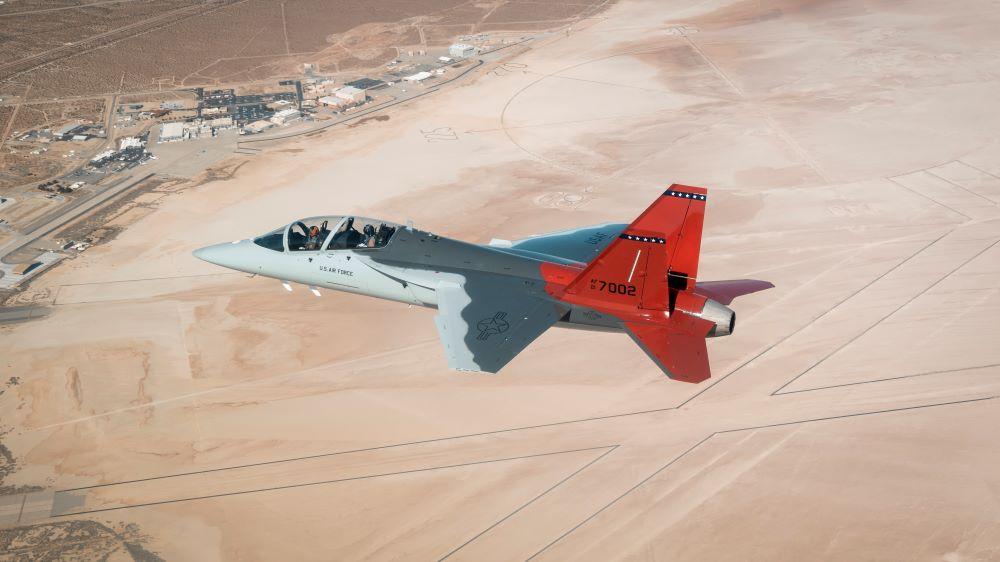This article is published in Aerospace Daily & Defense Report part of Aviation Week Intelligence Network (AWIN), and is complimentary through May 01, 2025. For information on becoming an AWIN Member to access more content like this, click here.

T-7
Boeing has met two milestones under a new agreement with the U.S. Air Force aimed at accelerating the fielding of the T-7A Red Hawk trainer that has been delayed, a sign of improvements for the program, the company says.
Boeing CEO Kelly Ortberg in an April 23 earnings call said the January 2025 memorandum of agreement with the U.S. Air Force is part of an overall push to stabilize fixed-price development programs that the company has struggled with.
“This continues to be an important example of how we are working with our customers to find better outcomes for both parties,” Boeing Chief Financial Officer Brian West added.
Boeing in a subsequent statement to Aviation Week said the milestones reached included providing key metrics for aircraft parts and availability during flight test and capability updates for ground-based training system simulators. These milestones were reached in March. The lack of parts has slowed T-7 testing in its early stages.
The agreement, announced Jan. 15, restricted how the Air Force would bring on early jets following extensive delays. Under the plan, the Air Force will buy four Production-Representative Test Vehicles (PRTV) using fiscal 2025 research development test and evaluation funds, to be delivered in fiscal 2026. These jets will be used to speed up test plan and curriculum development ahead of the delivery of operational aircraft, with the goal of keeping the initial operational capability target of 2027.
The PRTVs are in addition to five already delivered aircraft.
Under the previous plan, the Air Force had assumed a production contract award in 2025 with seven Lot 1 production jets in fiscal 2025.
The first PRTVs will be delivered by the end of the calendar year, AETC Commander Lt. Gen. Brian Robinson told Aviation Week in March.
In addition to the PRTVs, the Air Force has provided Boeing funding for design changes beyond initial requirements. One is focused on increased fuel capacity to allow the aircraft to fly longer for extended training sorties.





